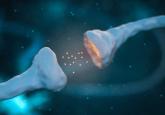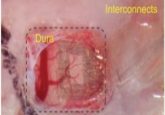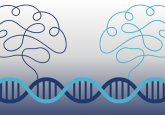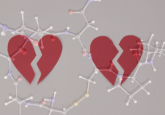Neurons prove difficult to excite in schizophrenia

Schizophrenia is associated with reduced synaptic gain, explaining hallmark electroencephalography signs.
Now, a study in Biological Psychiatry, led by Rick Adams (University College London, UK), has utilized electroencephalography (EEG) to determine that schizophrenia is associated with reduced synaptic gain (a loss of neural excitation), whilst hallucinations and other symptoms are associated with a loss of neural inhibition.
“The nature of brain circuit changes in schizophrenia is unclear,” describes Adams. “Is it too much excitation or not enough, or too much inhibition or not enough, or some combination?”
Schizophrenic symptoms are commonly thought to be caused by an imbalance of excitation and inhibition of neuronal activity. Working with colleagues from City University of London (UK), Yale University School of Medicine (CT, USA), University of Maryland School of Medicine (MD, USA), and University of Ljubljana (Slovenia), Adams used the noninvasive techniques of EEG and fMRI to measure differences in brain waves and assess local changes in excitability of people with and without schizophrenia.
How smells can linger in your memory
Scents are not only processed by the olfactory center, but also by the brain’s reward and aversion systems, explaining how scents can take on meaning.
Data were collected from 107 participants with a diagnosis of schizophrenia, 57 of their relatives and 108 control participants. EEGs were taken at rest, during mismatch negativity auditory event-related potential, and 40-Hz auditory steady-state response, a proposed indicator response of schizophrenic brain activity. People with schizophrenia displayed increased theta waves In resting EEG, and reduced mismatch negativity and 40-Hz power.
Dynamic causal computational modeling of the EEG and fMRI data highlighted that these EEG differences are likely the result of reduced synaptic gain. Psychotic symptoms of schizophrenia including abnormal auditory perception were associated with a loss of neural inhibition in auditory brain areas.
These findings support the hypothesis that in schizophrenia, a primary reduced synaptic gain on pyramidal cells is then compensated by interneuron downregulation. Furthermore, they suggest that psychotic symptoms, such as hallucinations, relate to this secondary downregulation.
“This might mean that the loss of excitation comes first, and the brain tries to compensate for this by reducing inhibition, but then this leads to hallucinations,” Adams said. “Imagine you are trying to listen to someone speaking on the radio, but the signal is very weak; if you turn the volume up, the speech is louder–but so is all the static and background noise–and so you may mistake some of this noise for actual speech. Something analogous might be happening in brain circuits in schizophrenia.”
By developing our understanding of the synaptic dysfunction that underlies schizophrenia, future clinical approaches for the treatment of people diagnosed with schizophrenia will be far better informed.






